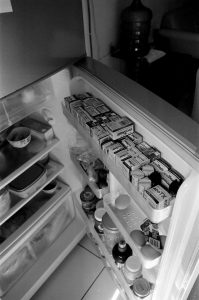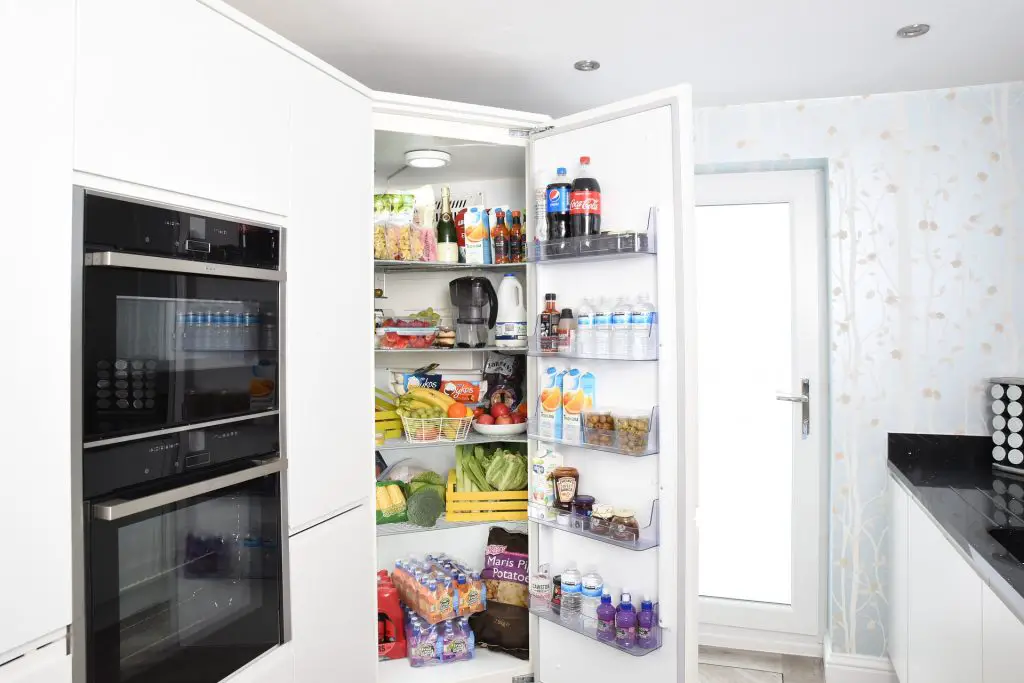Last week our new fridge was finally delivered, and this weekend we spent quite a bit of time reversing the door so it swung the right away. So, first, a few tips on determining how long does a refrigerator last or when should you replace your refrigerator? and then a few tips on reversing a refrigerator door.
Should I repair or replace my Refrigerator?
When should you replace your refrigerator?
 Our apartment refrigerator had been making some rather distressing sounds for several years. A couple times we thought it was on the verge of death, but it chugged on. We held off on buying a new fridge because we were planning to buy a house. We ended up holding off for over three years! Then, because we had to get a cabinet rebuilt before buying a full-sized fridge, we waited another eight months after moving into the house.
Our apartment refrigerator had been making some rather distressing sounds for several years. A couple times we thought it was on the verge of death, but it chugged on. We held off on buying a new fridge because we were planning to buy a house. We ended up holding off for over three years! Then, because we had to get a cabinet rebuilt before buying a full-sized fridge, we waited another eight months after moving into the house.
When we finally removed the fridge, we learned two things:
- It was twenty-two years old.
- The thing cost more in energy than it probably would have cost to replace it four years ago when we started to become concerned.
So, if you’re on the bubble, and don’t know when to replace your refrigerator, ask yourself these questions:
- Does it need repair and how much does that cost? A friend of mine paid $300 to have her fridge repaired, while a new one was just $500. Worse, the repair didn’t work, and she still had to buy a new fridge. (She got her repair money back.)
- How long does a refrigerator last? Is it more than ten years old? After that time, the likelihood of repeated breakdowns rises and the energy-saving technology is outdated, if it even has energy-saving technology.
- Are you planning to move or remodel the kitchen in the next few years?
- Can you get a rebate for buying a new fridge? Our utility offers $35 for recycling our old fridge, and may get $65 for buying a new Energy Star fridge.
So when should you replace your refrigerator? Should it have low energy cost consumption? Is it better to replace or just try to repair your old fridge? Keep on reading the article to find out!
Do the Energy Cost Comparison
 Our new fridge is 21.9 cubic feet while our old one was about 14.4 cubic feet. Even with the size difference, the new one is significantly cheaper to operate. Use the Energy Star calculator to compare the energy costs of the old fridge to a new fridge. If you could save more than the cost of the new refrigerator in energy savings during the time you plan to own it, it’s probably worthwhile to replace the old one.
Our new fridge is 21.9 cubic feet while our old one was about 14.4 cubic feet. Even with the size difference, the new one is significantly cheaper to operate. Use the Energy Star calculator to compare the energy costs of the old fridge to a new fridge. If you could save more than the cost of the new refrigerator in energy savings during the time you plan to own it, it’s probably worthwhile to replace the old one.
For example, our old fridge costs $173 per year to run, while a new one of the same size would cost $43 to run. It would pay for itself in four and a half years (assuming a $450 fridge plus sales tax and $75 delivery fee.)
Our new, larger fridge costs $60 a year to run. We didn’t opt for the ice maker, so I’m not factoring that into our costs. A fridge with an ice maker won’t deliver as great an energy savings over an older model. The energy savings from the new fridge will cover its cost in seven and a half years. Since we plan to stay in the house for ten years (or we’ll remodel the kitchen at that point), we’ll sell the fridge with the house and start over with a new fridge.
And Now a Word on Reversing Refrigerator Doors
Ug. This took two hours! The instruction manual and the delivery people made it sound easy, but it was actually rather difficult because the instructions were unclear, and in some cases completely wrong. The instructions told us to simply move the hinge screws over to the other side. After twenty minutes of trying to figure out how that would actually work, we realized we should follow the instructions for removing the door instead.
If you’re planning to reverse a refrigerator door, I also recommend having an electric screwdriver, a thin manual screwdriver, a socket wrench, and a friend to help you on hand. Follow these steps:
- Empty the refrigerator door.
- Remove any hole covers or screws from the side of the fridge that opens.
- Remove the handle.
- Remove the hinge bolts on the top of the fridge. Put them in a safe place. You don’t want to lose 15 minutes trying to fish a screw out from under the fridge.
- Lift the door off the base hinge. Set it down gently.
- Remove the bottom hinge screws.
- Move the hinge to the other side and screw it back in.
- Put the door back on.
- Attach the top hinge.
- Attach the handle.
- Place the hole covers into the empty holes where the fridge now opens.
